Bushfire Survivors Describe What It’s Like Fighting Flames From Their Doorstep
Credit to Author: Gavin Butler| Date: Wed, 22 Jan 2020 16:39:45 +0000
When Jimmy turned off the lights and climbed into bed on December 30, 2019, the fire front was still 50 kilometers [31 miles] away. The “Fires Near Me” app informed him that the flames were burning in an area of remote bushland more than an hours’ drive north of his hometown Cobargo. Outside the temperature was dropping, and a fresh northerly wind was losing its speed.
It was just after midnight when his phone started flashing.
“At 1:20 a.m. we got an emergency text saying it’s coming,” Jimmy’s daughter recalls. “So we got up to have a look at it, and we could see it up on the mountain: those big, 50 foot whirly things—fire tornadoes. It sounded like a freight train, just like everyone says. And then all of a sudden there was one spot fire, then another.”
By 2 a.m. the flames had swallowed up Jimmy’s shed, stockyards, stables, and fences. The pines lining his driveway were burning “like giant candles,” spewing ember helixes into the sky. And for the next 96 hours, Jimmy, 75, fought the fire: running from one hose to the next, scooping buckets full of water from his swimming pool, and doing everything he could to save the house he’d lived in for 30 years. By the time the storm passed and the smoke finally cleared, that house was the only thing left standing.
“The fire couldn’t have been any closer—she was right there,” he says, gesturing half-a-meter in front of himself. “We’ve still got a house, but the only reason it’s there is because we stayed.”
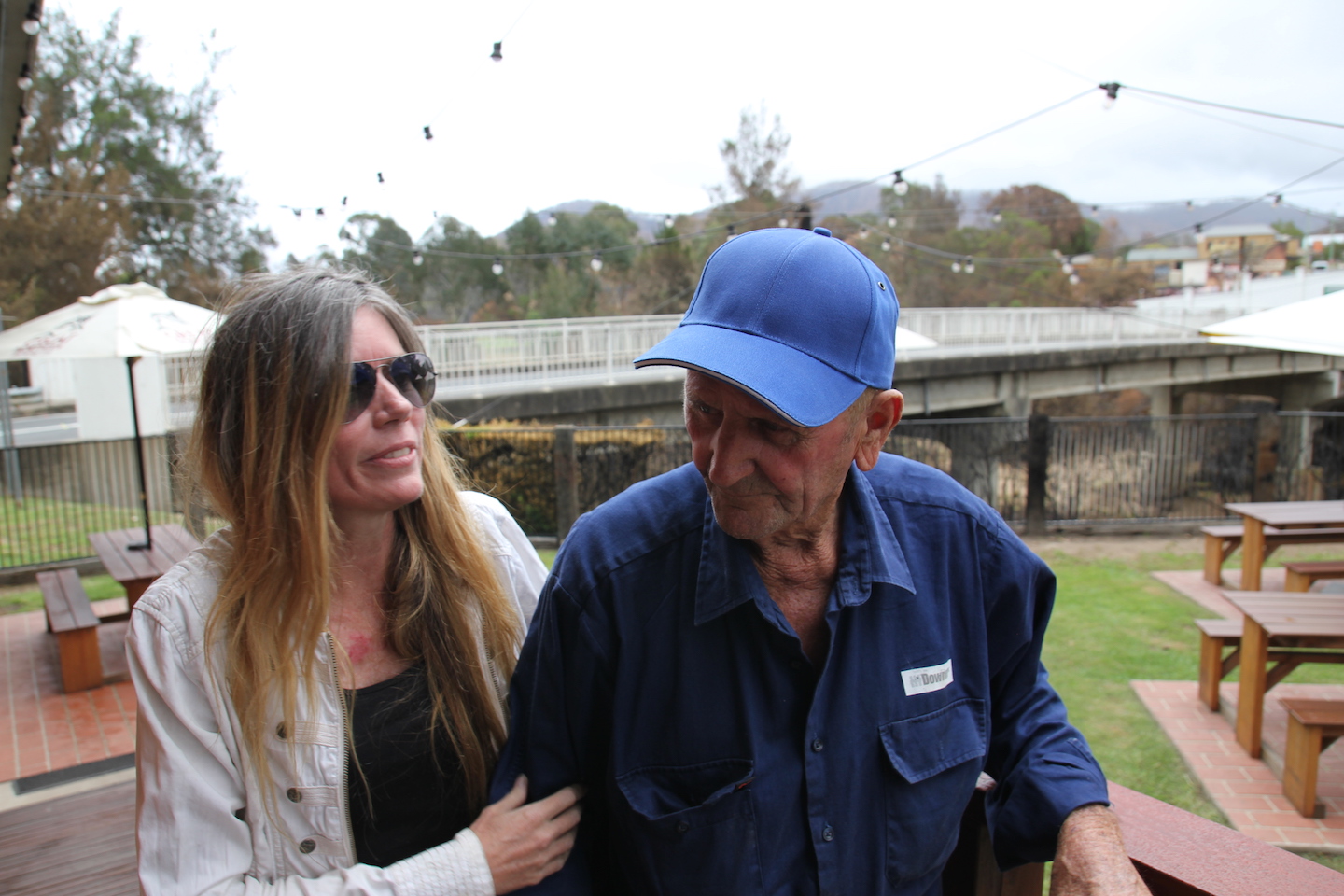
It’s yet to be confirmed exactly how many homes in Cobargo were lost to the ravenous bushfires that swept through on New Year’s Eve. Locals in nearby Quaama estimate the total loss for the area as somewhere in the fifties. Though fires had been burning around the country and throughout eastern New South Wales for months, no one here thought the inferno would arrive as suddenly as it did. And by the time the flames were all but licking at the door, hundreds of residents in the area were being issued the same emergency warning: evacuate now—right now—or stay and defend.
“Fires come through very quickly. It just runs through your place, and you can’t keep up with it,” says Glenn, who lives with his wife in an area of heavily-forested national park just outside Quaama. “We decided to fight it. We just watched it come to us and said ‘well that’s it. We’ll be here’.”
Glenn’s descriptions of the ensuing 30 hours invoke images of Biblical armageddon. Fire dripping from the sky; ash raining down through the wind and the heat, and the all-consuming roar of the blaze. “Tornadoes, and fireballs, and things like that.”
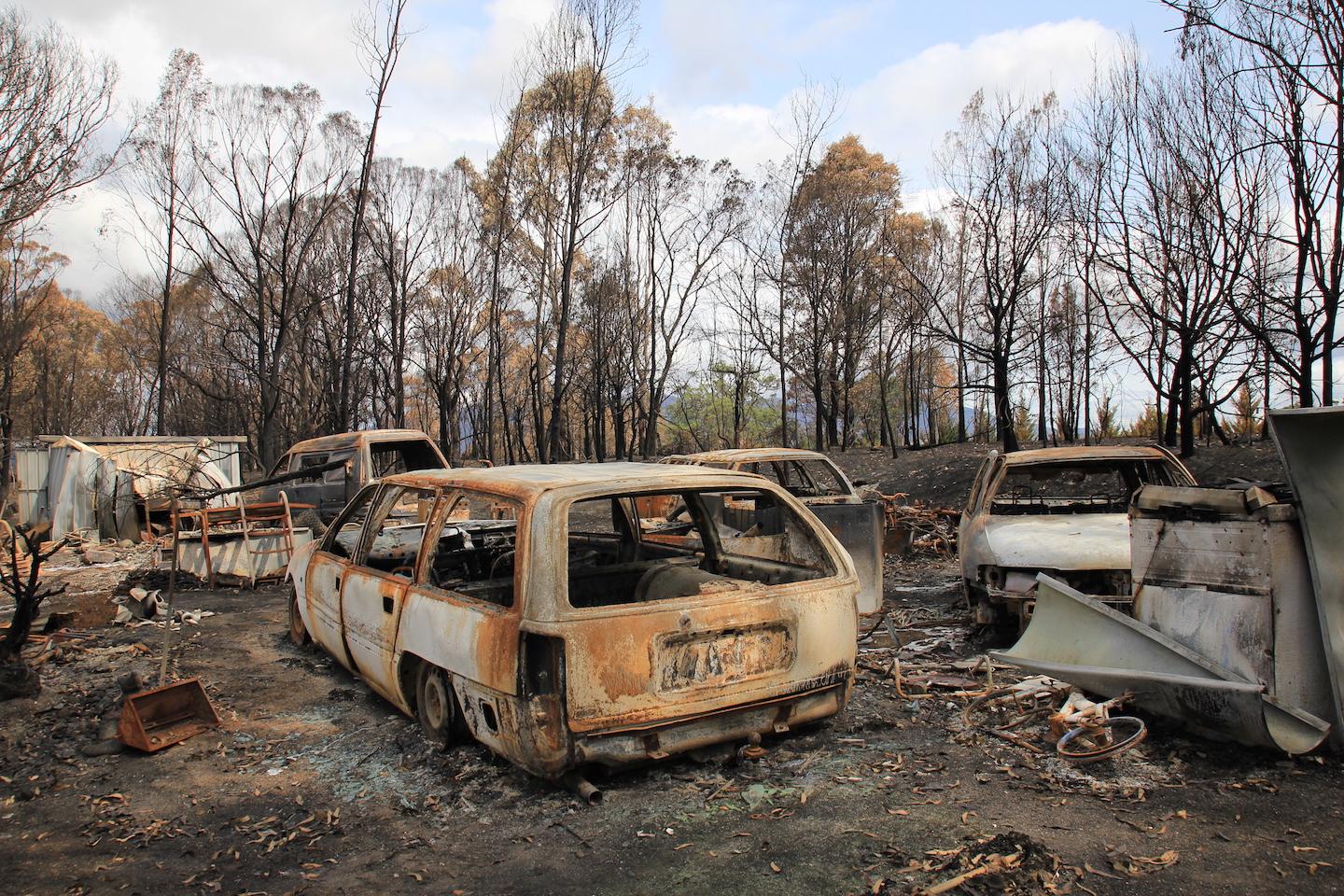
“As people know, fires create their own weather systems, so the wind was driving the cinder attacks and it was coming off the ground and all you could see was sparks and fire going everywhere,” he says. “The smoke was thick as, and it was hot—bloody hot. It was dark, but the sky was crimson red. It looked like the sky was on fire. And it was like that for days.”
Even after the first wave of flames had swept through, embers and spot fires continued to wreak havoc on Glenn’s property. Armed with a firefighting pump and two 25,000 liter water tanks, he dug in his heels and did everything in his power to keep the fires at bay. One tank ruptured after a few hours, spilling thousands of liters of precious water before burning to the ground. The remaining tank melted as it drained, the plastic disintegrating down to the rapidly lowering waterline as Glenn doused off the flames. Then his pump caught alight.
“I had my fire pump on a trailer, and the trailer caught fire so I had to put it out as well,” he recalls. “So I’m standing there extinguishing my firefighting equipment; I’m using the pump to put itself out.”
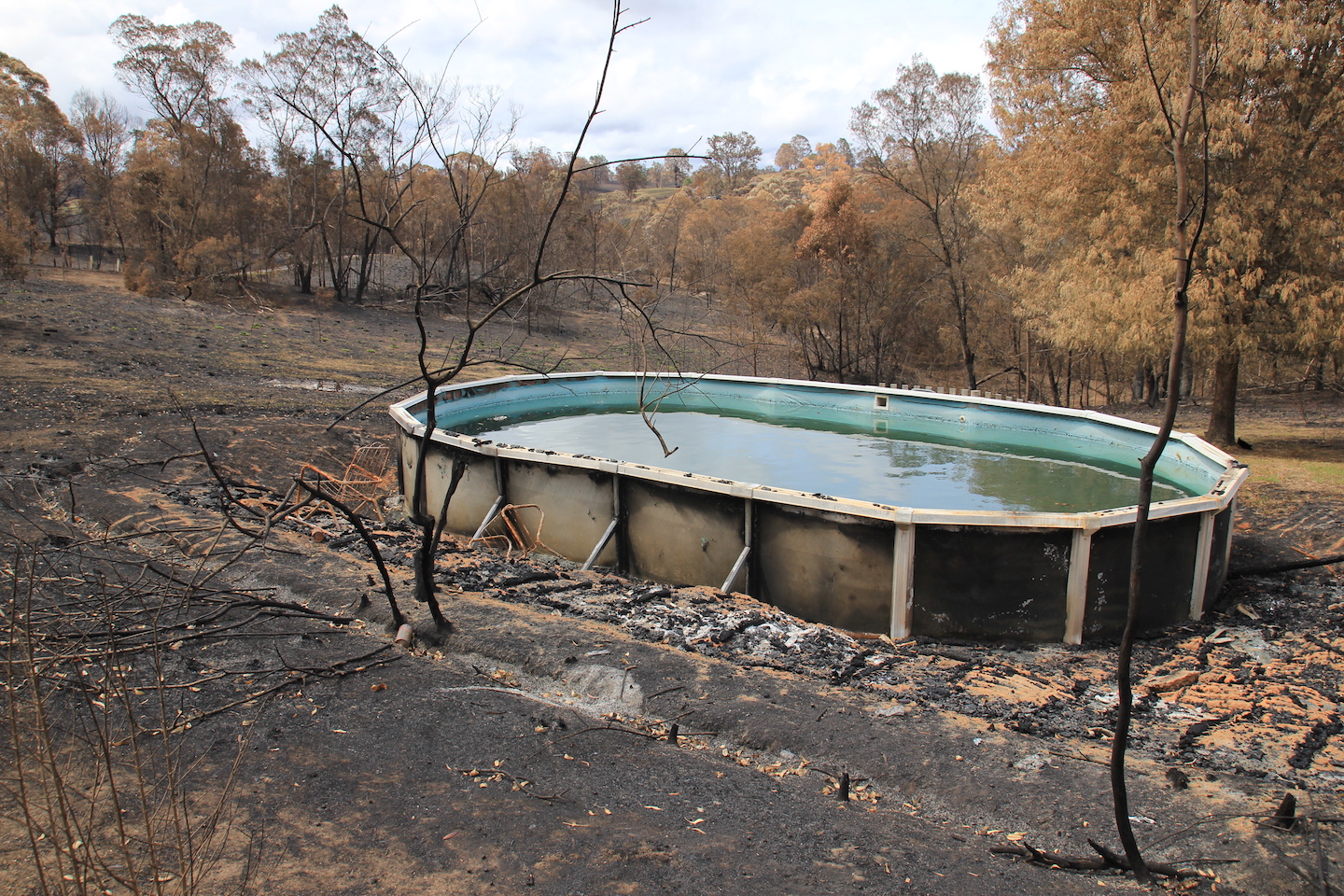
Visuals such as these illustrate how easily the decision to stay could have gone either way for Glenn and his wife. Hours later the air was still thick with smoke, the sky still dark, the storm still raging. But whatever the outcome, Glenn insists he was always prepared for the worst.
“We’ve been through a lot together [my wife and I], so we figured that if we’re gonna go we’ll go together,” he says, quietly. “Whatever we do in life we do it together. And truthfully, it’s easier to die than it is to live. Whether we’re here or not, that moon is still going to circle the earth and the sun is going to come up every day.”
Eventually, he managed to quell the blaze—running from his shed to his house and back again as the tempestuous winds repeatedly blew him to the ground. But within the space of a day his garden, his fruit trees, and everything else surrounding the house had been “burned to nothingness.”
“We’re lucky to be here, actually, because we stayed and fought it,” he reflects. “We were really bloody lucky.”
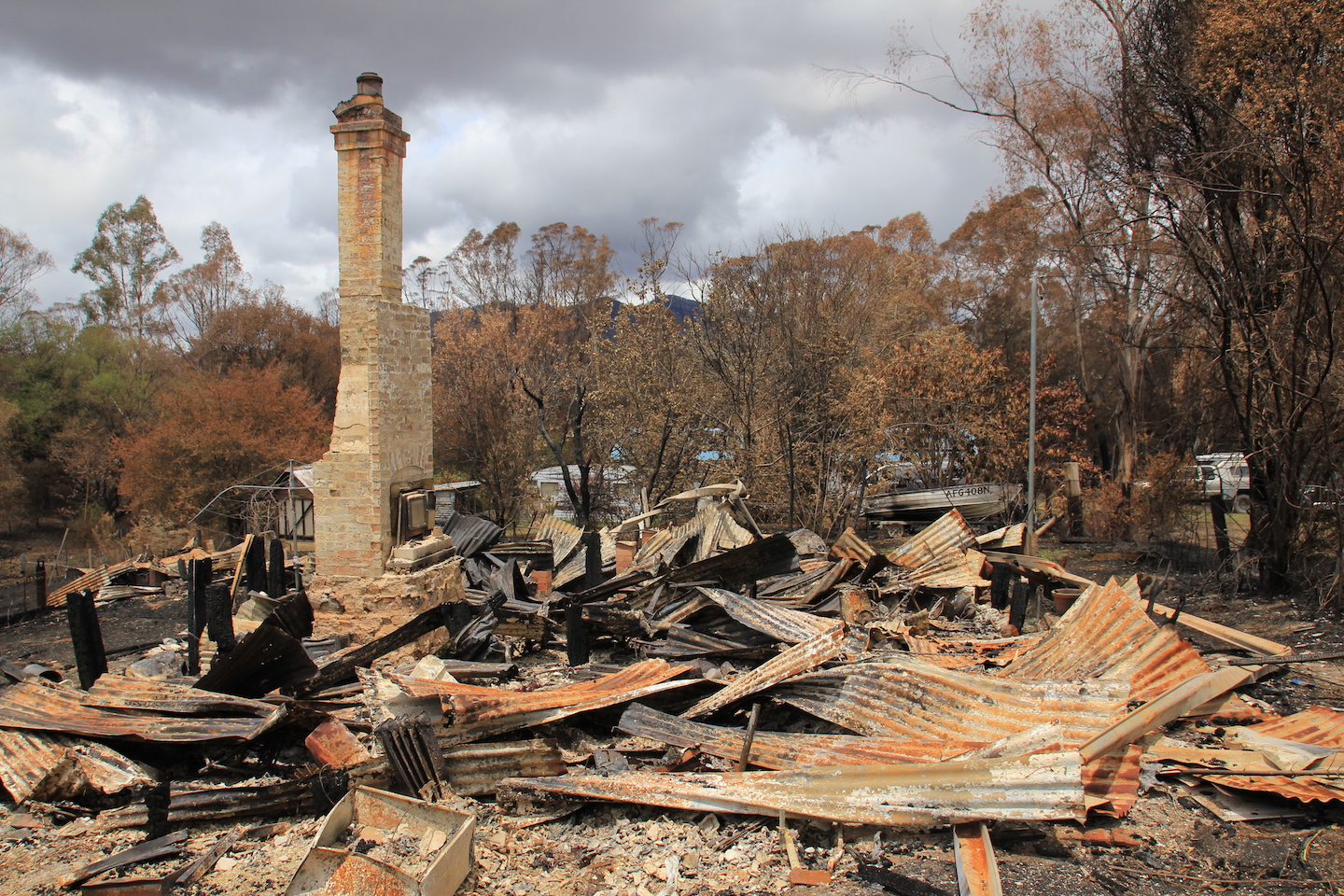
Others were less lucky. Patrick and Robert Salway, a father and son who lived on a farm just north-west of Cobargo, died defending their home that same night. The morning of the 31st, a police spokesperson confirmed that "a woman has told police she’d left the property the previous evening, but her husband and son stayed behind to defend the home and farm equipment. She returned this morning and discovered their bodies."
Driving through the disaster zones of southeastern NSW, remnants of the bushfire’s many other victims are all too easy to come by. Houses reduced to piles of blackened iron and scorched homewares, fireplaces, and brick chimney stacks standing in the detritus like obelisks from a bygone era. Police tape strung up around entire residential blocks, “ASBESTOS” warning signs flapping in the hot, dry wind. Halfway between Cobargo and Quaama, a family picks through the rubble of their home just days after the inferno has come and gone. There is almost nothing left to salvage.
It was about four in the morning by the time Pete and Letitia, a middle-aged couple living on the outskirts of Quaama, decided to pack up the car and get out, driving through the heart of the firestorm to take shelter at the nearby Rural Fire Service station.
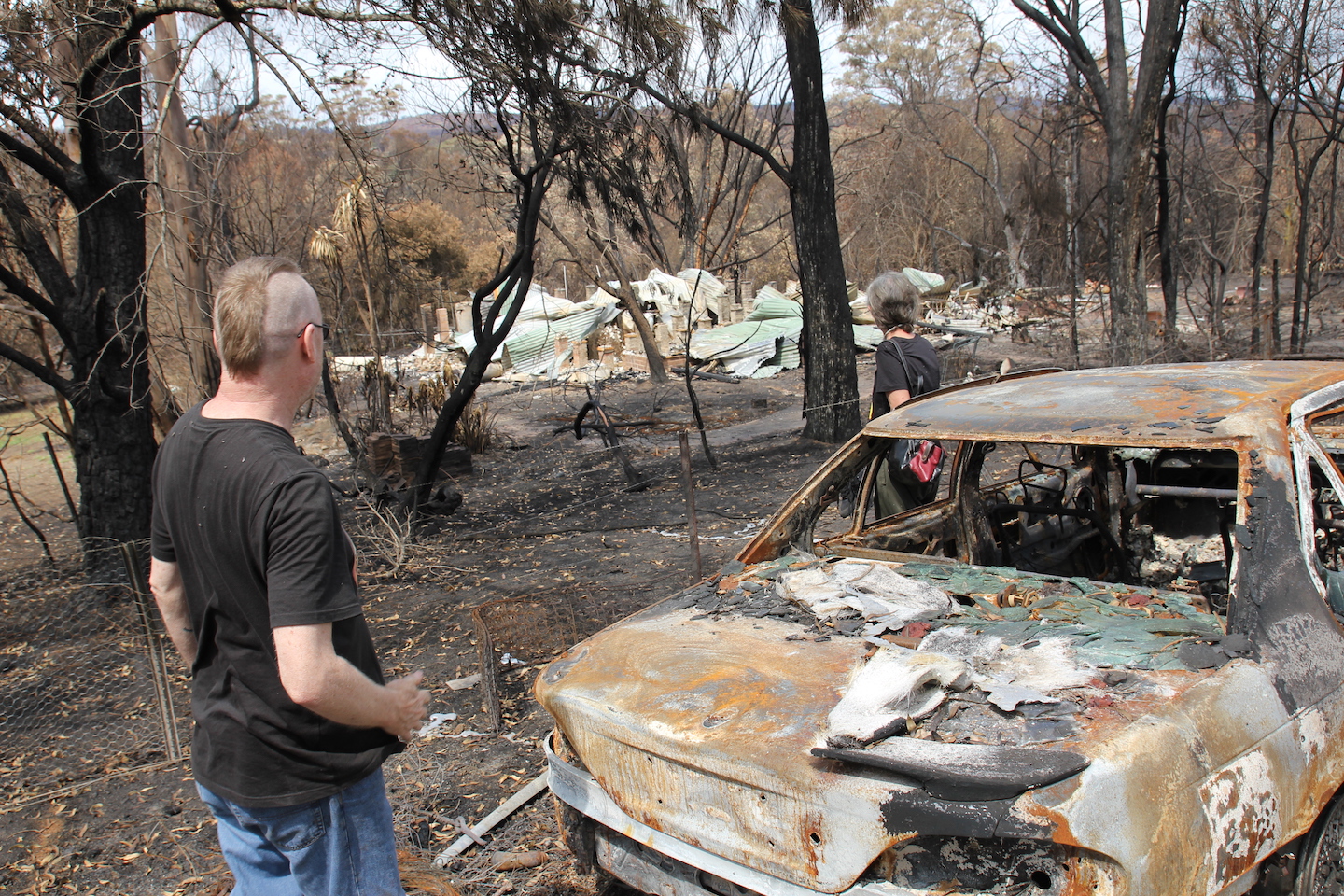
“We left it way too late,” Pete admits, the twisted wreckage of his house barely visible at the end of the scorched driveway behind him. “It was coming from the north. Everywhere was glowing red and dark, and we just loaded our dogs and shit in the car and flew down to the fire station.” The first thing Pete remembers, apart from the hellish red glow, is the utter lack of visibility—embers smacking against his windscreen, forcing him to poke his head out the window and keep his eye on the white road lines as trees and power poles came crashing down around him. The next thing he remembers is the sound.
“It’s fucking scary,” he says. “The noise as we were driving down was like… well, I’m an old surfer, and this was like 30 foot jaws just crashing into the rocks.
“It’s hard to explain, but I was just thinking to myself: The last thing I’m going to hear is my family screaming and burning to death in the car. That’s how fucking scary it was.”
Pete and Letitia have come back to feed their animals—a pair of goats and an emaciated-looking horse—and Letitia is searching around in the ruins, trying to find any treasures that might have survived the blaze. She’s assembled a small pile of trinkets in the dirt: eerily ordinary objects like coffee mugs, jewelry stands, and white porcelain dolls.
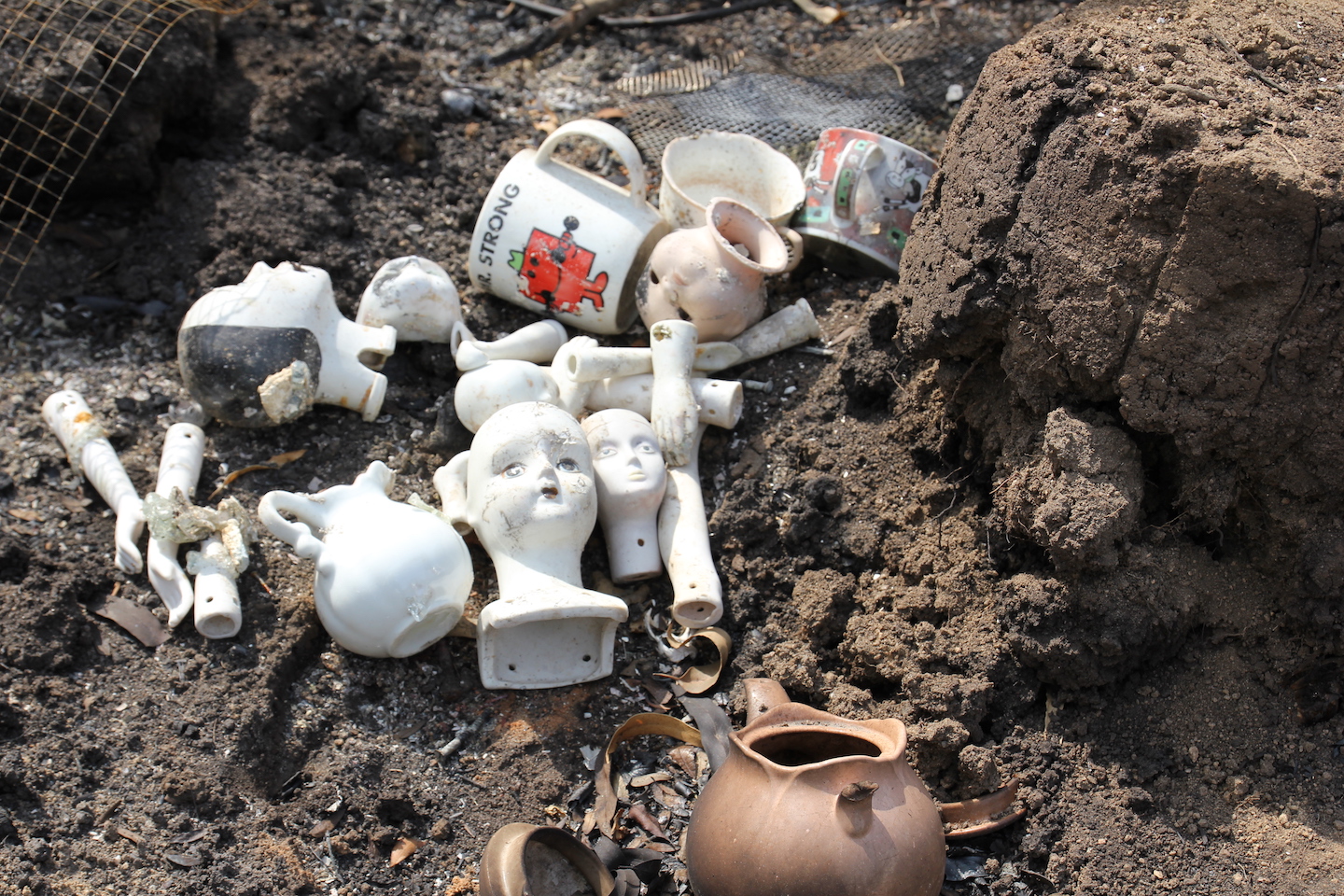
“All we managed to take with us was the photo albums, and that was it,” Pete explains. “Photos and the clothes we were wearing. Even if we’d left a day earlier we could have gotten heaps more shit out.”
“I’m just having a little search and finding things,” Letitia adds. “I’m a bit of a collector, so that’s… I mean we had insurance, but all that’s gone and I’ll never get those things back. My nana’s rings, all those cute cards the kids wrote. Just the things you collect over the years.
“Every minute you think about something else. But at least we’re all alive.”
It’s a feeling shared by many locals in the area: We may not have much, we may not have anything, but at least we’re still standing. It’s an inspiring endorsement for the resilience of the human spirit. But Australia’s bushfire disaster is not confined to the impact it’s had on people.
The damage inflicted upon the country’s natural environment and its inhabitants is hard to quantify. Millions of miles have been turned to scorched earth, and current estimates suggest that more than a billion animals have died in the fires. These are just numbers. But Glenn, for one, has witnessed firsthand the devastation that these bushfires have wrought on the native flora and fauna.
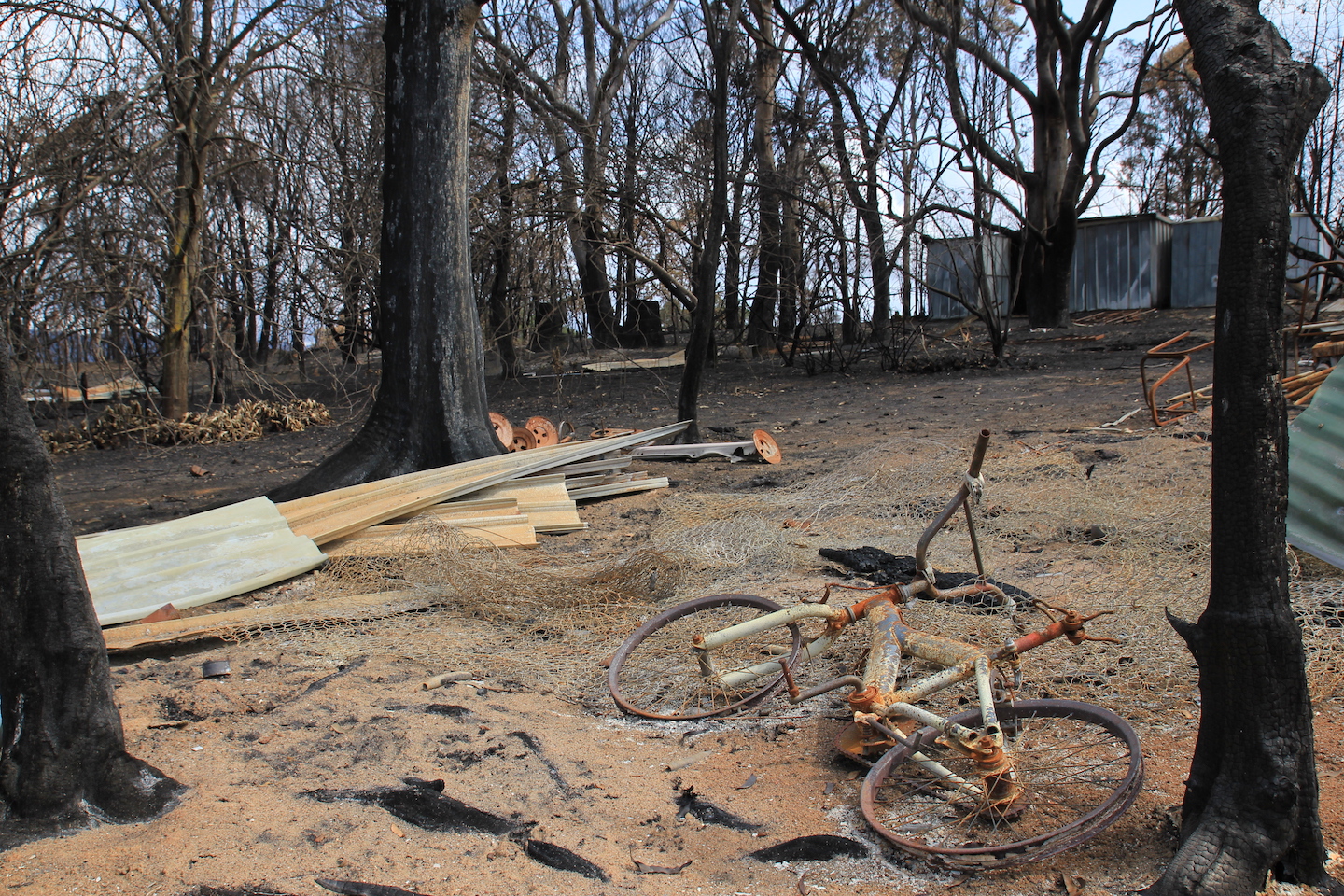
“We’ve lost species, definitely,” he says. “We care for wildlife out at our place and we lost probably 85 percent of our local native animals—redneck wallabies, kangaroos, spotted quolls, koalas. I’ve watched them die from smoke inhalation. I’ve seen what the fire did to them—just burned them to ash.
There’s likely more destruction to come. Although rain showers have given some brief reprieve to bushfire-ravaged communities in southern NSW, it’s not enough to completely extinguish the dozens of blazes still burning around the state. And while many locals take consolation in the fact that all the fuel around their homes has already been incinerated, there are still huge swathes of dried out bushland that could easily catch alight if the wind blows the wrong way.
“That's what people have been saying: they think it's going to come back and get what it hasn't burned yet,” Letitia says. “It couldn't really burn anything more here. But there are still quite a few fires.”
Even as she speaks, a dirty blue shroud of smoke is gathering over the horizon.
“That’s looking pretty smoky over there,” she says, nervously. “Hopefully we’ll be alright.”
This article originally appeared on VICE Australia.